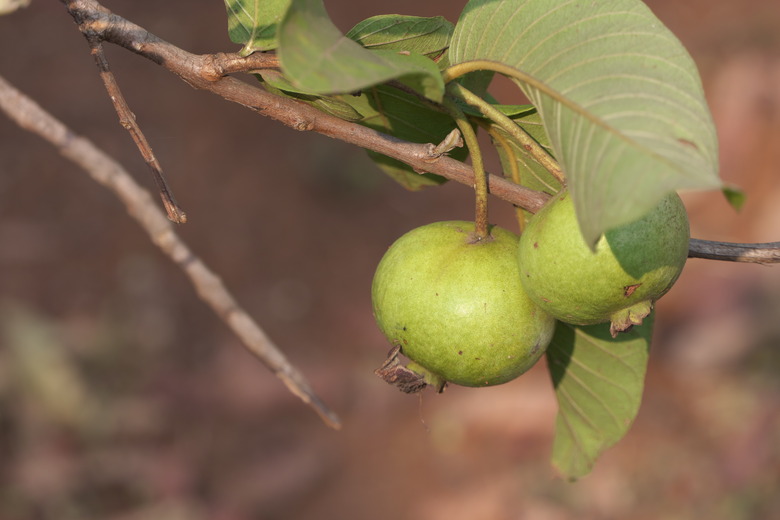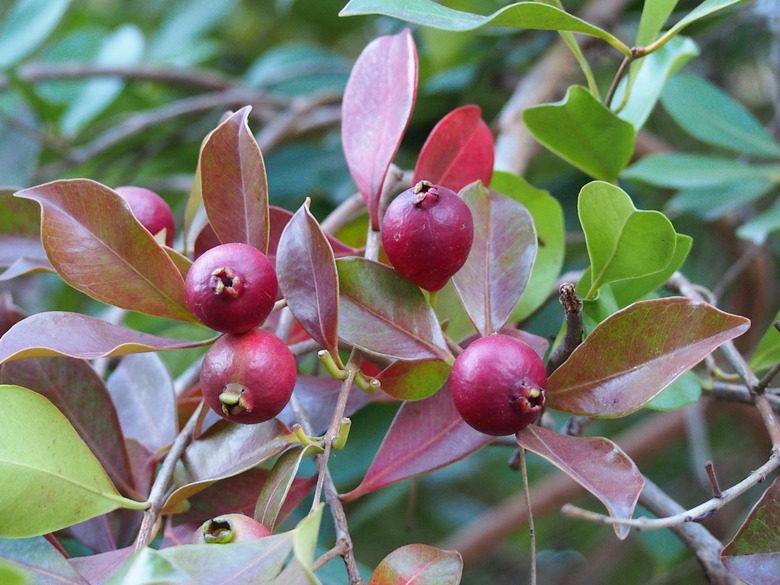How To Protect Guava Trees During The Winter Season
If you live in a climate colder than USDA hardiness zone 9, you might still want to grow a tropical fruit tree like the guava. While it's not guaranteed and will require extra care and attention, you might have luck if you can protect a guava tree from freezes and frosts.
The common guava (Psidium guajava, USDA hardiness zones 9 to 11) is native to the American tropics. It is hardy and spreads quickly, so it has naturalized in most tropical or subtropical areas in the world. However, **temperatures that dip into the 20s (Fahrenheit) can kill a guava fruit tree.**
About Guava Trees
The common guava is a small tree, usually multi-trunked, growing to about 20 feet tall. It is also known as a guayaba and guajava. The Thai call it ma-man, while in the Philippines, it is known as bayabas.
High in vitamin C, pear-shaped guava fruit is actually a berry. Although it is much larger than most berries, the size varies considerably according to variety, from just 1 ounce to 14 ounces.
When ripe, the fruit is usually yellow but can also be green, while the inside flesh is white, pink, yellow or red.
Guava Varieties
In Florida, where it is grown commercially (along with Hawaii and Puerto Rico in the U.S.), most quince-tree-look-like.html'>guava varieties have pink or white pulp.
Among the most popular cultivars of the white-fleshed varieties are Crystal, Lotus and Asian White, all recommended for home gardens by the University of Florida IFAS Extension. Pink or red guava varieties include Patillo, Homestead and Hong Kong Pink.
In addition to the common guava, the strawberry guava (Psidium cattleianum, zones 9 to 12) has small fruits compared to most common guava fruits at just 0.5 inch to 1.5 inches in diameter. You might also find this guava under the name Cattley guava.
The pineapple guava, sometimes sold under the name feijoa guava (Acca sellowiana, previously Feijoa sellowiana, zones 8 to 10), is not actually a guava at all, but it does have guava-like fruits.
Protecting Guava Trees in Winter
Guava trees grow best in temps ranging from 73 to 82°F. If temps in your location dip below 60°F, the tree's growth will slow or even cease.
Temperatures in the high 20s, such as 27 to 28°F, can kill a young tree, although mature trees might withstand temps in the mid-20s, depending on other environmental factors. Anything below this is likely to cause irreparable damage.
Freeze Protection
If your hope of harvesting some tropical fruit is to be realized, it's critical to protect your guava tree from freezes. Texas A&M University recommends piling dirt around the tree trunk, called "soil banks." Here's how:
- Pile soil around your tree trunk about 2 feet high at the beginning of winter and then remove it in mid-spring.
- Use a large tarp or a lightweight blanket to cover the entire tree and anchor that to the ground.
- If freezing temps are forecast to last a few days, consider placing a heater or a 150-watt light under the tented tree.
Another option entails draping your tree in incandescent holiday lights, which will add warmth.
Location Matters
Note that your tree location is also important. Trees planted in full sun against south-facing walls will experience more warmth than those shaded by a north wall, for example. If you have elevation changes in your garden, try to situate your guava on higher ground, because cold air settles in low spots.
References
- Cal Poly UFEI: Common Guava
- University of Florida IFAS Extension: Guava Growing in the Florida Home Landscape
- Texas A&M University: Home Fruit Production – Guava
- Texas A&M University: Cold Protection
- Centre for Agriculture and Biosciences International: Psidium Cattleianum (Strawberry Guava)
- University of California Agriculture and Natural Resources: Frost—Avoidance and Dealing With Damage

